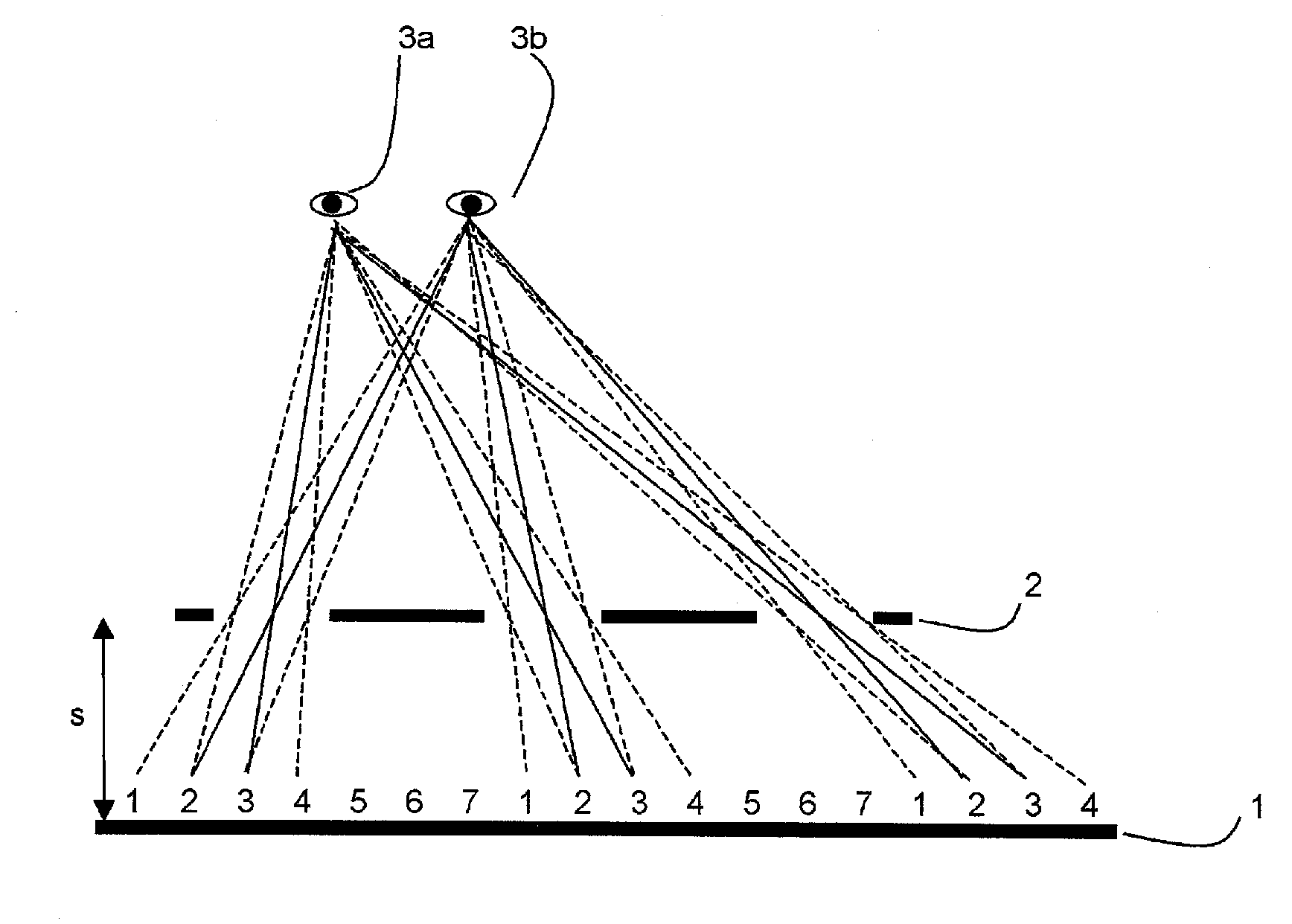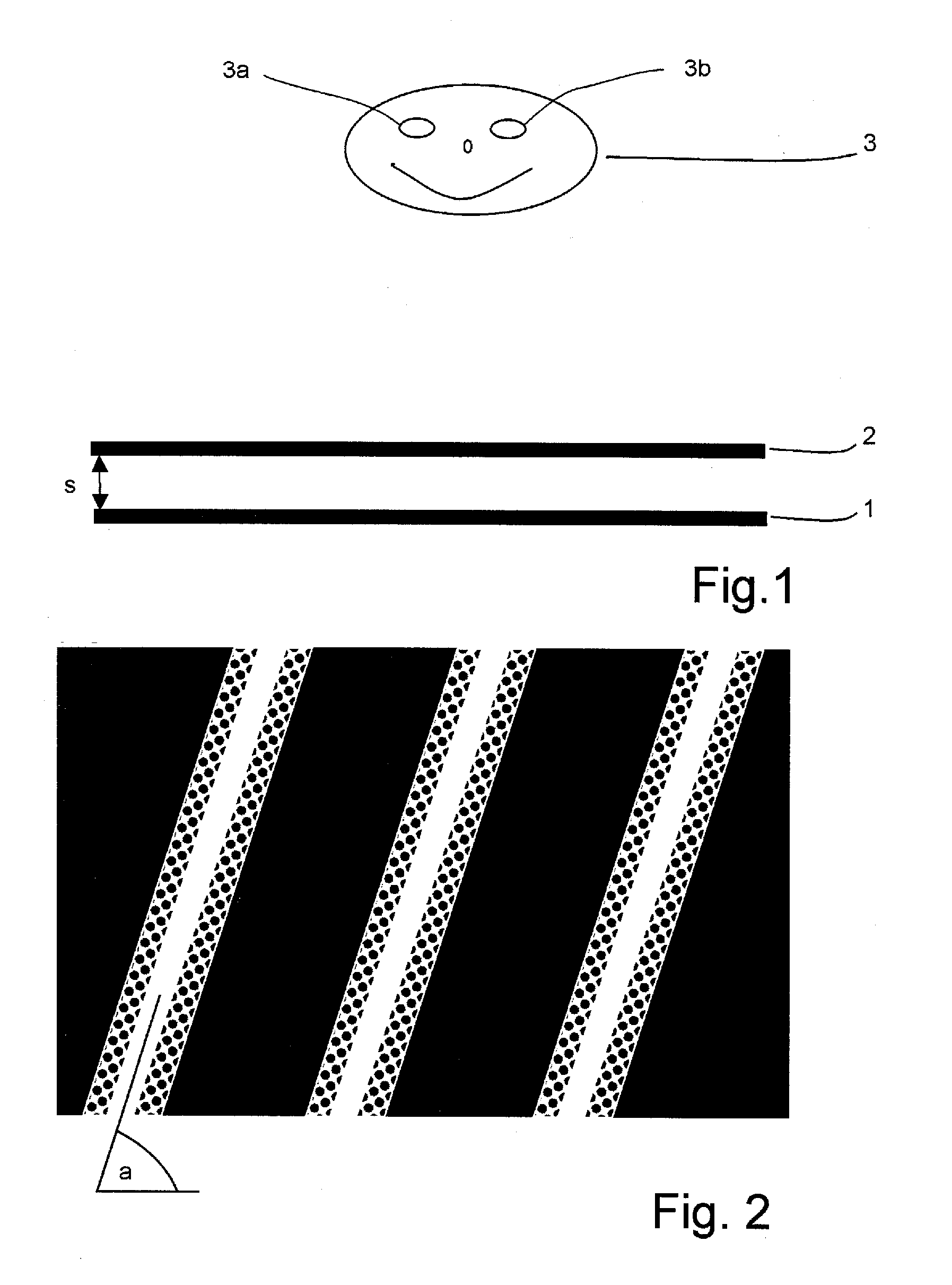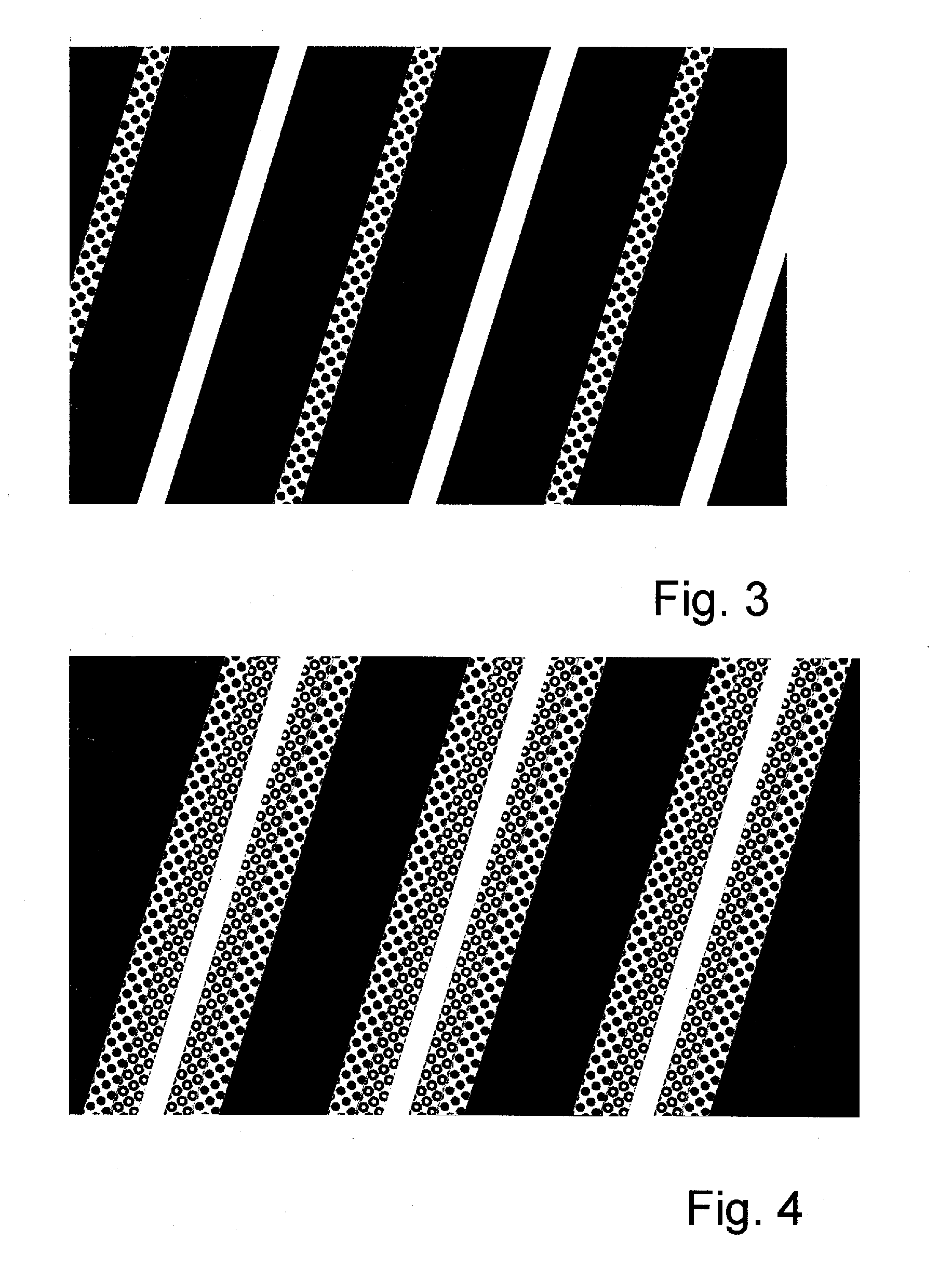Method and Arrangement for Spatial Display
a spatial display and spatial technology, applied in optics, instruments, electrical equipment, etc., can solve the problems of high light loss, difficult production of lenticular lenses, and failure to gain the widespread use of autostereoscopic systems, so as to improve perceptibility, improve brightness, and improve perceptibility
- Summary
- Abstract
- Description
- Claims
- Application Information
AI Technical Summary
Benefits of technology
Problems solved by technology
Method used
Image
Examples
Embodiment Construction
[0190]None of the drawing is made to scale. This also, and in particular, applies to angular dimensions.
[0191]FIG. 1 shows the schematic setup for implementing the invented method for spatial display. On the grid 1 of pixels x(i,j) with rows i and columns j, bits of partial information from different views A(k) with k=1, . . . , n and n>1 are made visible. Arranged in front of the grid 1 of pixels x(i,j) at a distance s is a parallax barrier screen 2, which contains opaque, semitransparent and transparent segments, with the transparent and the semitransparent segments essentially corresponding to stripes that are delimited by straight-line edges, which run uninterruptedly from one margin of the parallax barrier screen 2 to an opposite margin. An example of such a parallax barrier screen 2 is shown as a sectional view in FIG. 2.
[0192]Because of the viewing restriction effected by the at least one parallax barrier screen 2, the two eyes 3a, 3b of one or several viewers 3 will see at l...
PUM
 Login to View More
Login to View More Abstract
Description
Claims
Application Information
 Login to View More
Login to View More - R&D
- Intellectual Property
- Life Sciences
- Materials
- Tech Scout
- Unparalleled Data Quality
- Higher Quality Content
- 60% Fewer Hallucinations
Browse by: Latest US Patents, China's latest patents, Technical Efficacy Thesaurus, Application Domain, Technology Topic, Popular Technical Reports.
© 2025 PatSnap. All rights reserved.Legal|Privacy policy|Modern Slavery Act Transparency Statement|Sitemap|About US| Contact US: help@patsnap.com



